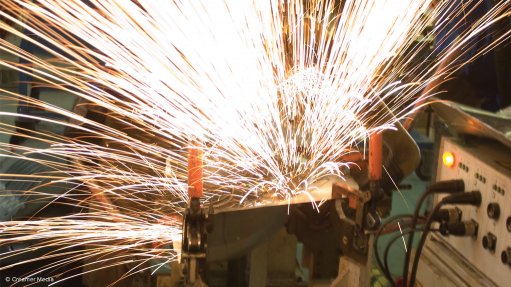
Photo by: Duane Daws
The seasonally adjusted Kagiso Purchasing Managers’ Index (PMI) increased by 4.3 points to 56.5 in August, staying above the neutral 50 threshold for the fifth consecutive month and reaching its highest level since August 2007.
While all the major PMI subcomponents increased, the business activity and new sales orders indices made the largest contributions to the overall increase, Kagiso Asset Management research head Abdul Davids said on Monday.
Following a minor pullback, the business activity index increased sharply to 59.2 in August, indicating that pressure on manufacturing output may be abating, while the new orders index increased by 2.5 points to 57.5, suggesting that the demand for manufactured goods had improved.
Davids said that while the conditions in the eurozone were improving, they remained tough, and that the improvement in demand was, therefore, more locally driven.
“We may be seeing the first signs of import replacement as the weaker rand improves the competitiveness of locally manufactured goods, versus more expensive imported goods. In addition, the sustained weakness in the currency has improved the global competitiveness of our exports of manufactured goods,” he added.
The inventories index increased to 57.7 from 54 points in July, indicating that manufacturers were purchasing more stock, driven by slowly improving market conditions.
The employment index surprised on the upside, increasing to 51.2 points from 47.5 in July. This was the first time since November 2012 that the index had been in expansion territory, but Davids cautioned that manufacturers remained reluctant to increase production capacity until sustained demand-side improvements emerged.
The price index remained relatively stable at a high level of 87.2, indicating persistent input cost pressures.
“The upward price pressure faced by manufacturers for most of this year is mainly owing to higher fuel, electricity and labour costs, and the sharp increase in producer price index from 5.4% year-on-year in May to 6.6% in July corroborates this,” he said.
Davids added that the future outlook for the sector was more positive with the index measuring expected business conditions in six months’ time increasing by 2.8 points to 55.8.
The Manufacturing Circle commented that it was too early to establish whether the improvement in PMI signalled the start of a more robust recovery of South African manufacturing.
“However, it does concur with anecdotal evidence that the weaker rand has led to some import substitution, that government’s local procurement efforts are gaining traction and that there is improved demand from African export markets. In addition, the improvement may also feed off advances for manufacturing in the US, the UK, continental Europe and China, all of which are driven by broader economic recovery gaining momentum in those markets,” the group said.
The Manufacturing Circle added that there were three downside risks to manufacturing in South Africa that had to be addressed if the improvement in the PMI was to become the start of a more robust and properly leveraged recovery trend.
These risks included rapid bunched-up increases in administered prices as a result of poor public investment decision-making, the inefficient roll-out of infrastructure, expensive financing and funding mechanisms, and inefficient recoupment of investment costs, as well as the lack of security of supply of, in particular, energy and water.
Employment could also suffer as a result of low productivity, industrial unrest and the relatively low cost of capital combining to make mechanisation a more attractive option, the Manufacturing Circle said.